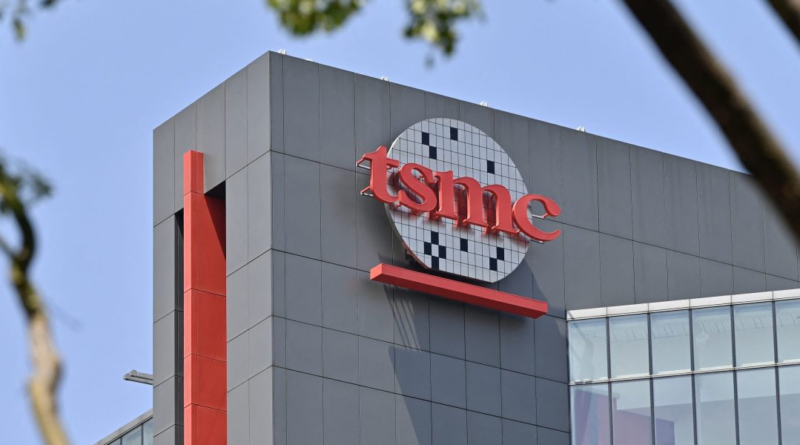Taiwan’s surging energy prices are a warning for power-hungry American AI companies—and a boon for the biggest chip manufacturer
As American AI companies and data centers continue to proliferate and strain the power grid, TSMC is an example of the energy crunch that could lie in their not-too-distant future. TSMC’s financials are hurting from increased energy costs in the short term. However, its near-monopoly on the most energy-efficient chip technology means it’s poised to benefit from more widespread power shortages in the long term, as its technology becomes vital for companies looking to save on power costs.
“There’s no denying that energy in AI data centers is becoming a big choke point, probably the next choke point,” Michelle Brophy, director of research for tech, media, and telecom at research platform AlphaSense, told Fortune. “In actuality, the [need for] rising energy efficiency in computing enhances [TSMC’s] position.”
TSMC posted solid earnings Thursday morning, riding “insatiable” demand for its highest-end AI chips to a 17% yearly increase in net revenue, according to CEO C.C. Wei.
But energy costs were a headwind for TSMC, which manufactures more than 90% of the world’s most advanced AI chips at its factories in Taiwan. TSMC is by far Taiwan’s largest energy consumer, and was hit hard by a 17% price hike in its power costs last April followed by another 25% increase earlier this month, executives said in an earnings call with analysts.
TSMC CFO Wendell Huang estimated that increased energy expenses had reduced the company’s margins by up to nearly a full percentage point. Huang also adjusted the company’s second-quarter margin guidance down by slightly more than a percentage point, citing energy costs.
How rising energy prices could help TSMC in the long run
Energy bills might be hurting TSMC now, but in the long run, it stands to gain from global energy shortages related to AI. That’s because TSMC has a huge head start in manufacturing the most advanced, energy-efficient chips. It’s currently the only supplier capable of producing so-called three-nanometer chips, the most powerful and energy-efficient models on the market, and it expects to begin mass producing its next-generation 2-nanometer chips next year, which will be even faster and more efficient.
“If we’re thinking about the U.S. [manufacturing facilities] that are going up, it’s more likely that [capital] is going to be spent on a more efficient [two-nanometer chip],” Brophy said. “That really bodes well for TSMC.”
AI companies have already been scrambling to find alternatives to getting their power from an increasingly strained grid. OpenAI CEO Sam Altman has backed a startup that promises to use small nuclear reactors to power AI data centers. Private equity firm Blackstone is reportedly investing $25 billion in data centers in the middle of the desert, located right next to solar arrays that could power them directly. TSMC took matters into its own hands in 2020 when it leased power from an offshore wind farm, anticipating shortages in Taiwan’s power grid.
Increased energy costs squeezing buyers is one factor that gives TSMC leverage to raise its prices. The chipmaker increased prices by about 10% in 2022 and another 5% last year, according to Morgan Stanley analyst Charlie Chan. Buyers demanding a limited supply of TSMC’s most energy-efficient AI chips could bid up prices even further.
CEO Wei also suggested in a call with analysts that once TSMC’s chip factories in Arizona, which it’s building with support from the CHIPS Act, begin production, high labor and equipment costs in the U.S. could push prices up even further.
“If a customer wants to have manufacturing done within the U.S., obviously, it’s going to cost more—not only from an energy perspective, it’s going to cost more from a labor perspective,” Brophy said. “Those costs are going to be passed on to the customer.”
TSMC founder Morris Chang previously estimated that manufacturing costs in the U.S. could be double the cost of producing them at TSMC’s Taiwan facility
“If you give up the competitive advantages of Taiwan and move to the US … the costs are going up,” Chang said.
Although TSMC beat analysts’ estimates, its revenue was down 3.8% quarter-over-quarter, which CFO Huang attributed to low seasonal demand for TSMC’s lower-end chips used in smartphones. Its stock fell almost 7% on the Thursday, but Brophy said that the market’s reaction was more a product of its astronomical expectations than any real failures at TSMC.
“Its elevated expectations of AI-related semiconductor companies…They’ve been on quite a tear in the last few months. So I’m not totally surprised. They were priced for perfection,” Brophy said. “The consensus opinion is that the strength of AI is going to outweigh potential weakness in those [lower-performing smartphone] segments.”




